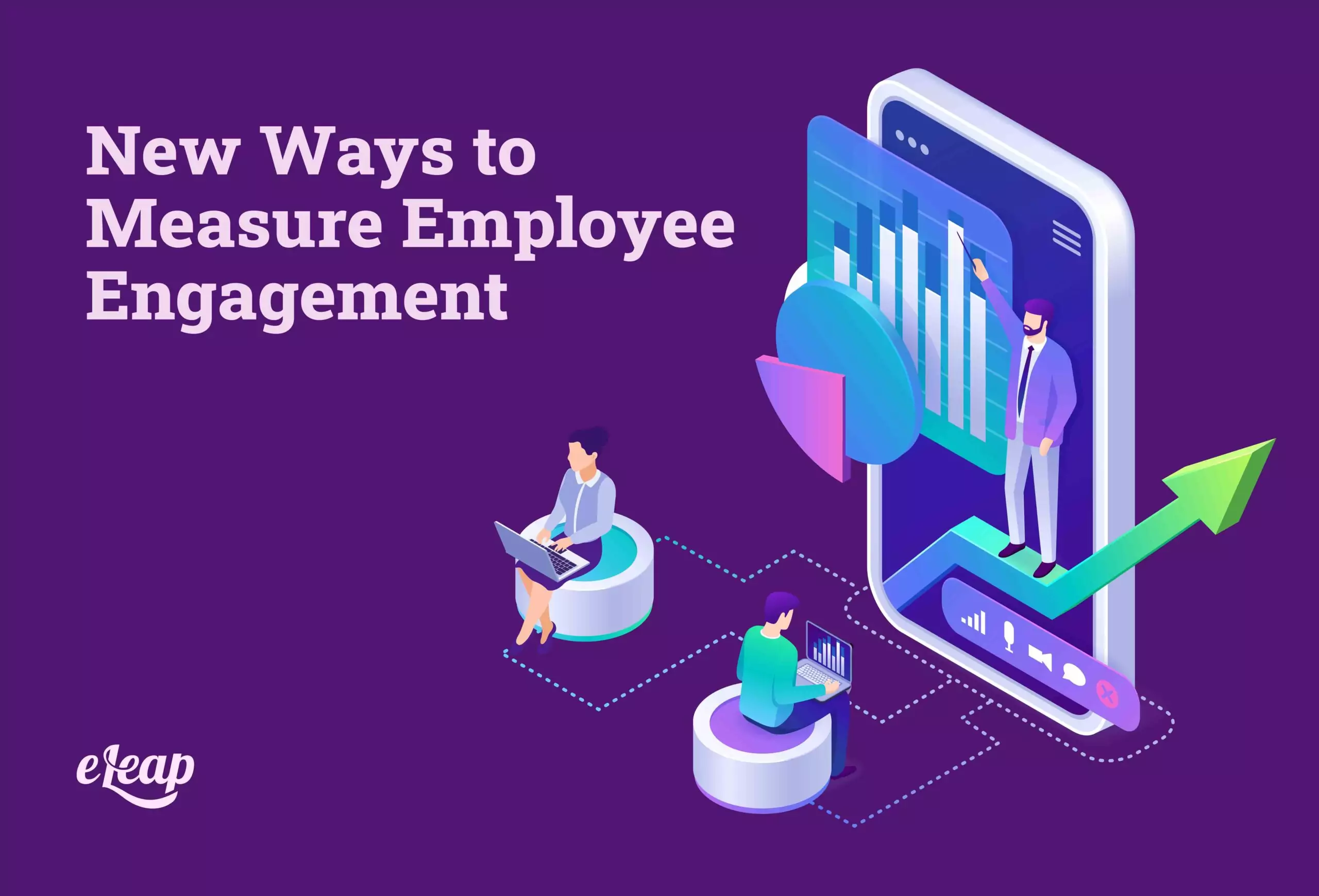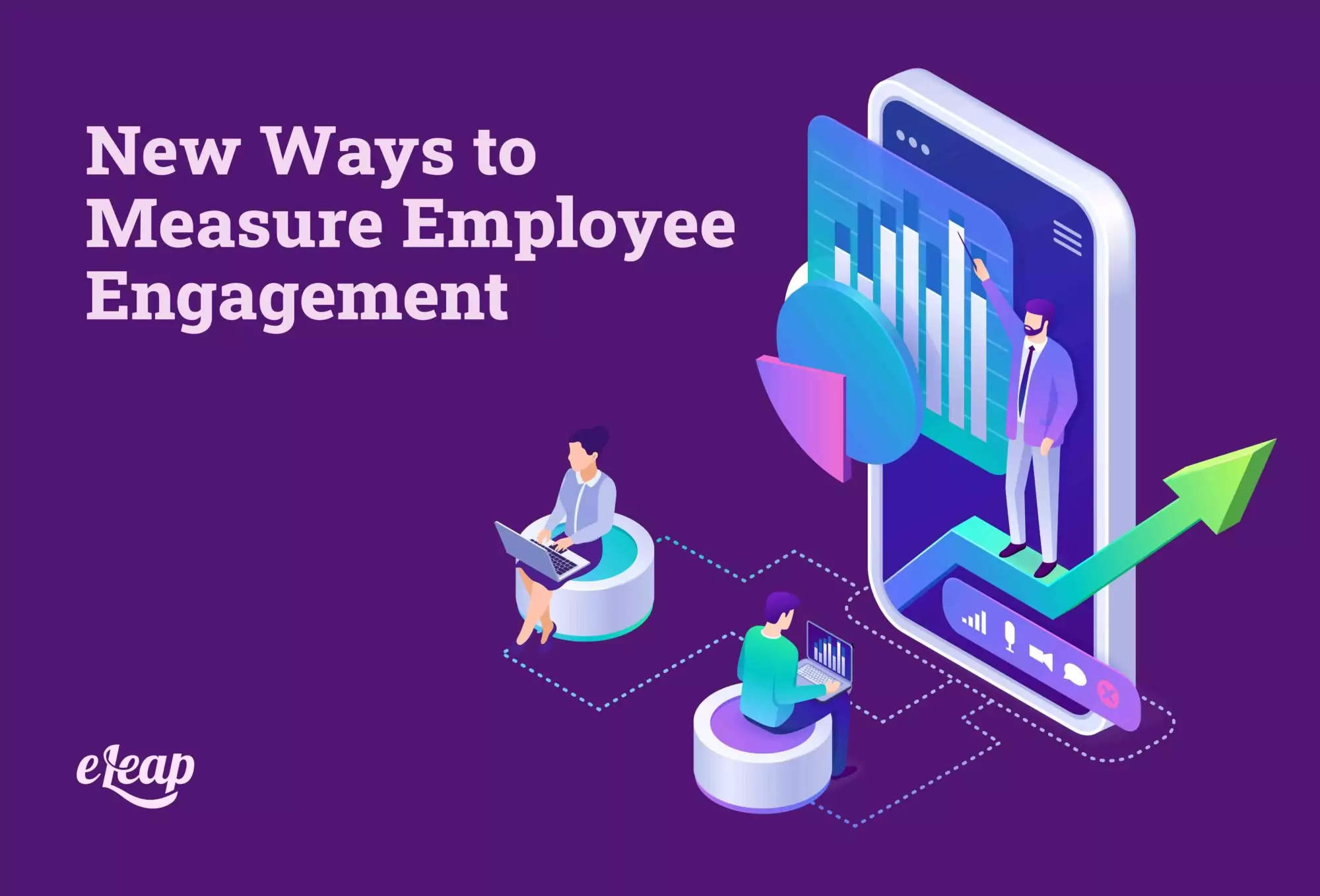5 New Ways to Measure Employee Engagement

It’s difficult to read any blog or article about corporate learning or training without being bombarded with content about employee engagement. If it’s not employee engagement, it’s about retention, turnover, or the onboarding process.
This content isn’t appearing in front of you by chance. This critical information is a hot topic because all of these things will make or break your organization. When team members remain engaged, they dive head-first into their work.
They have a positive attitude, they set goals and track them – and most importantly, they’ll probably be more loyal to your organization. Why are some companies still having difficulty with engagement while others are knocking it out of the park?
Based on research, companies that have gotten it right are achieving engagement levels that are nearly triple the corporate average. In this article, we’ll discuss how to get you started on achieving these levels within your own company.
The most important first step is understanding what makes up employee engagement. You need to have a firm understanding of the true definition of this term.

What Is Employee Engagement?
Employee engagement is the measurement of how tight an employees’ connection is with their daily work habits. This is measured using three metrics: Commitment, referral, and motivation.
Some people think that a good employee engagement strategy means hosting a group questionnaire or watching a video collectively within departments. A couple of decades ago, this might have been correct. The truth is, if you want to sustain engagement, you’ll need to approach this process with multiple motivational strategies.
These motivations include things like leveling up, automated processes, and mastering new skills. The bottom line is employees want to learn. Receiving the benefits of mastering new skills can be a long-term reward. Things like bonuses and pay are only short-term benefits that bring short-term results.
In the following section, we’ll outline several ways to actually improve engagement for the long term.
Best Ways to Improve Employee Engagement
There are multiple ways to improve employee engagement. Some of these methods focus on long-term goals, while others are quick wins that lead to fast results. Try some of the following methods and see what the results end up being.
1. Live Your Mission and Values
What is the purpose of your company? What does your organization value internally? Team members want to know that their company has a bigger picture in mind and gives meaning to their brand and others.
When you clearly state the purpose of your organization and what makes your company different from others, you need to do this with authority. This will get team members motivated to actually believe in your organization’s vision. You need to include elements of a long-term vision as well, not just short-term goals.
This vision should be visible on a daily basis and needs to be reiterated whenever possible. If you can rally your team behind your company’s vision, you’ll have much higher engagement rates.
When employees understand the core values of your organization and how those impact everyone involved, they’ll also become inspired, motivated, and focused.
2. Onboarding
First impressions are one of the most critical elements of new hires. The onboarding process will set the tone for welcoming a new hire.
The way a new hire first views your company will go a long way in their experience overall. It’s easy to make a good first impression and roll with that momentum. However, it can be difficult to smooth over a negative first impression and turn things around.
Use the onboarding process to demonstrate exactly what the future holds for your organization to new hires. Make them feel included in this vision, and give them examples of what they can do to help you and your team achieve this vision. From the start, they will have a huge sense of purpose and most likely fall right into their new role.
3. Train New Team Members to Succeed Beyond Their Roles
The number one reason individuals change jobs is because of the opportunity for new growth. When demonstrating a path that shows development within your organization, it drives engagement in a big way.
You should promote growth from within the company when you talk to your employees. When team members feel like there is room for them to blossom into new positions and experience growth, they’ll have no reason to look elsewhere to reach new heights professionally.
Once you get employees to focus on growing within your company, you’ll experience commitment. If you remember from the beginning, this is one of the most critical elements of employee engagement.
What employee doesn’t want to feel like their employer cares about their growth and wellbeing? Conveying this message is one of the critical functions of a good manager. Mutual respect creates connections that reveal paths to shared success and common goals. Top-level organizations know that showing employees their potential depends on a manager’s support for developing that potential.
Build relationships that allow employees to feel safe when it comes to sharing motivations, skills, and interests. Here are some efficient ways to accomplish this:
- Managers must become interested in their employees’ advancements.
- Help managers have a vision for development opportunities with leader meetings between departments.
- New opportunities should be publicly advertised, and make sure you celebrate employee accomplishments.
- Give managers a reason to groom employees into new and higher positions by offering them bonuses or rewards for helping with this growth.
4. Recognize and Reward
Employees should clearly feel that their coworkers and leaders take notice of their accomplishments and appreciate their hard work. When team members are recognized, it keeps them working hard, helps them stay loyal, and drives a huge atmosphere of motivation among your entire team.
Whenever someone is motivated in life in general, they perform their best at whatever they do. This is a universal law, regardless of the industry or organization. Consider these simple ways to recognize employees and show appreciation:
- Celebrate goals that have been met and huge milestones reached.
- Don’t celebrate things that only benefit a few while others have a difficult time.
- Celebrate even the small wins.
- Give credit to the individual or entire when warranted.
You need to have a diverse reward system. If the way you recognize everyone is uniform, it becomes stale and seems unauthentic. Employees will pick up on this and become unimpressed.
Each time you give someone a pat on the back, it needs to have a personal touch. This gives you a chance to form bonds with your team and really make them feel appreciated.
Rewards and recognition won’t work the same for every team member. You need to understand what motivates different employees and what they prefer when they’re recognized. You need to understand what drives them to perform their best. This allows you to maximize your efforts and lets them know you consider their personal preferences.
5. Communicate Feedback In the Right Ways
Employees feel good about communication in the workplace. They’ll feel well informed, recognized, heard, and they’ll work well with others. Encourage a culture of consistent communication and constant feedback between peers and management.
Create a way for them to share opinions and feedback without feeling threatened or ashamed. Make sure they are well-informed about critical decisions made within their department.
When you create the environment outlined above, employee engagement will go through the roof. At the end of the day, it’s all about showing appreciation and making team members feel included. Sometimes the smallest changes end up driving the biggest results; employee engagement is the perfect example of this. Click to download your free eBook: ‘How to Foster Employee Engagement through E-Learning’.